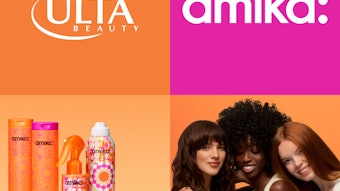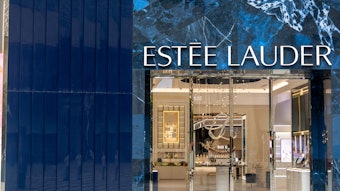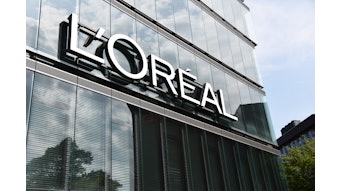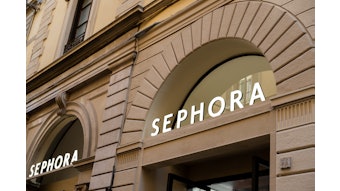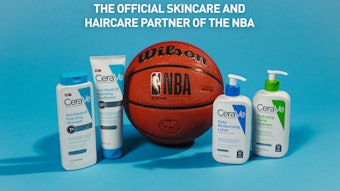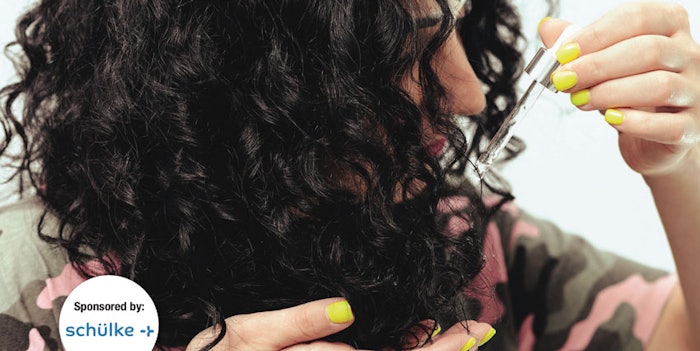
The pandemic and associated lockdowns have shifted hair care consumer behaviors toward e-commerce, at-home solutions and direct-to-consumer brand strategies. These adaptations have merged with longer-term concerns regarding hair health—inspired by skin care trends—leading to significant innovation and disruption in a relatively short span of time. Notably, most product categories and benefits are often interrelated, creating a holistic treatment mix for today’s consumers.
State of the Hair Care Market
The global hair care market is forecast to grow to $211.1 billion by 2025, according to Grand View Research. Key drivers include the fast-growing market in India, as well as hair color products for aging consumers and demand for innovation that addresses air pollution.
Nearer-term, there are some challenges. According to NPD data, Q2 2020 U.S. prestige hair care sales totaled $197.2 million, a modest decline of 10%, year-over-year, offset somewhat by a 95% year-over-year rise in e-commerce sales. Hair care dollar volumes continued to outperform through June, however.
Prestige hair care is the one sector that has not ceded sales back to brick-and-mortar as shops have reopened. To illustrate, e-commerce results for June were about double that of brick-and-mortar.
According to Social Standards, based on social media conversation data through the end of July 2020, brands with strong presence and growth across several hair care categories include Briogeo, Cantu Beauty, Kerastase, Mielle Organics and Not Your Mother’s.
Health Comes First
As a recent Social Standards report noted, “consumers are primarily focusing on hair health,” driving up social media conversations around hair masks, serums, oils, hair loss/growth solutions and scalp treatments. These skin care-inspired concepts are likely to dominate ingredient and product innovation for the foreseeable future. Here, we round up the latest on-trend data, product and ingredient concepts shaping the market.
CBD Hair Care
CBD has been creeping into hair care solutions in the wake of the ingredient’s 2018-2019 popularity surge. Recently, Henkel finally dipped its toe into the arena with the launch of the direct-to-consumer brand, Wellphoria, a hair care/styling and hand/body lotion range comprising hemp-derived CBD. The CBD is said to improve the healthy look of hair.
All products retail for $24 and feature 50 ppm CBD, as well as hemp seed oil. The product mix comprises a Nourishing Shampoo, Nourishing Conditioner, Nourishing Intensive Treatment, Masque Hair & Scalp Oil, and Nourishing Hand & Body Lotion.
Scalp Care on the Rise
The scalp is skin, so it’s no surprise skin care trends have boosted shopper interest in taking care of this critical area. Scalp scrub searches online have grown more than 40% recently, according to Spate, totaling about 12,500 U.S. searches/month. Non-brand search terms dominate the space, though Nexxus and Kristin Ess are highly associated with the trend.
Top concerns associated with scrubs include moisturizing, exfoliating, purifying and cleansing benefits, as well as the treatment of dandruff and thinning and oily hair. Products in this area may include pre-shampoos and scalp scrub brushes.
According to Social Standards, social media conversations associated with scalp treatments have benefitted Mielle Organics, which has experienced 158% growth in volume. That said, Wella and Keratase are category leaders.
Neutrogena’s and Vogue International’s high-profile Healthy Scalp collaboration is reportedly clinically proven to cleanse and moisturize the scalp without stripping strands. The collection includes Hydro Boost with Hyaluronic Acid, Clarify & Shine with Pink Grapefruit to clarify and exfoliate oily scalps, Gentle & Soft with Micellar Water for cleansing, and Soothe & Calm with Tea Tree Oil to address scalp discomfort.
“We know 78% of consumers believe hair care is just as important as skin care,” said Hanan Wajih, senior marketing director North America, Vogue International. “The team at Vogue, in partnership with Neutrogena, has been working on this line for two years to bring coveted skin care ingredients such as hyaluronic acid, micellar water, and tea tree oil to scalp and hair care—ultimately delivering healthy scalp and hair care gentle enough for everyday use.”
Clariant recently released a concept product in line with the trend—Kanso (Simplicity): Simply Rebalancing Scalp Toner, which contains a minimal number of ingredients to help protect the scalp from external stress and calm irritation. The formulation comprises a range of materials, including the Actience Fresh cooling agent; Eosidin to address indoor pollution damage; EquiScalp, which is sustainably sourced from stem cells technology to soothe irritated scalps and reduce squamous formation while preserving the scalp’s microbiota; and B-Circadin, extracted from Lespedeza capitate, which counters the negative effects of blue light and resynchronizes skin cells’ circadian rhythm.
Symrise, meanwhile, has launched SymControl Scalp to normalize sebum production on the scalp to promote healthy hair. The technology is extracted from Tetraselmis suecicais Mediterranean algae (99.4% from natural origin) and is COSMOS-, halal- and kosher-certified.
Elsewhere, Novachem’s Golden Milk (INCI: water (aqua) glycerin (and) Curcuma zedoaria root extract (and) Piper nigrum fruit extract (and) Crocus sativus flower extract) features natural-origin curcumins and curcuminoids to help with inflammaging—inflammation associated with cellular aging—which is critical for increasing skin resistance against external aggressions and improving hair absorption. In applications, Golden Milk can reportedly decrease burning, irritation, redness, and/or signs of premature aging in the skin and hair; sensitive skin; and the partial/total inactivation of the hair bulb and growth of weak and fragile hair.
Serums, Oils & Masks
Feeding into the skinification of hair care, serums, oils and masks are on the rise. According to NPD data, top-performing products in Q2 2020 included hair masks and other hair treatments, which both experienced sales gains of 30% in the period. Hair treatments gained $13 million in sales during the lockdown.
According to Social Standards, over the last 12 months, hair serum and hair oil social media conversations led the hair care category overall. In addition, hair mask, serum and oil conversations have grown 55% (July 2019-July 2020). Interestingly, hair masks feature prominently in hair loss/growth conversations, expanding 65% in social media conversation between July 2019 and July 2020.
For the full article, check out Global Cosmetic Industry's October 2020 digital magazine.



